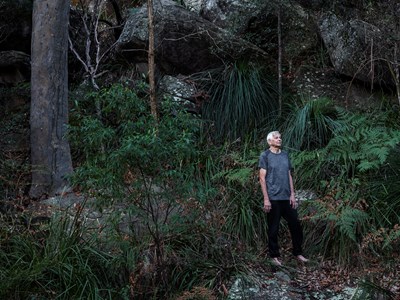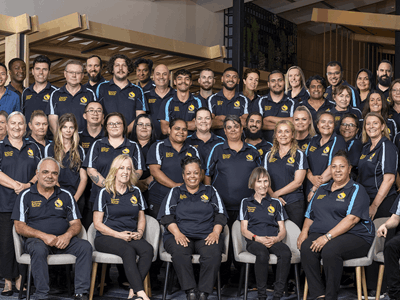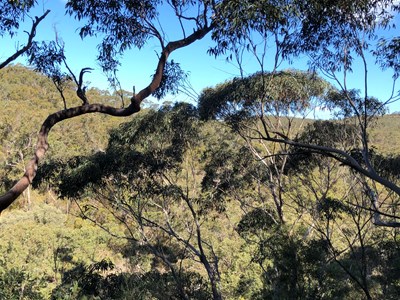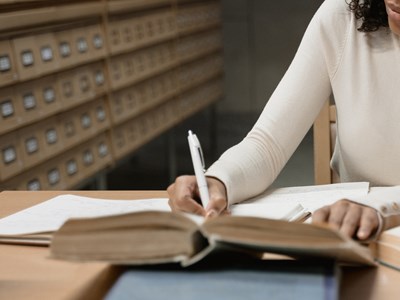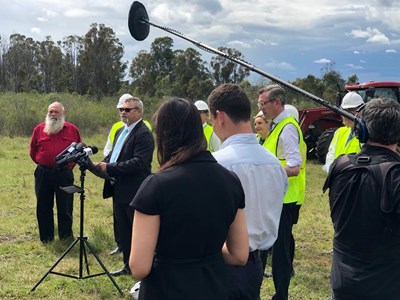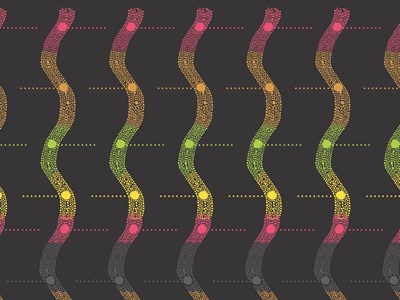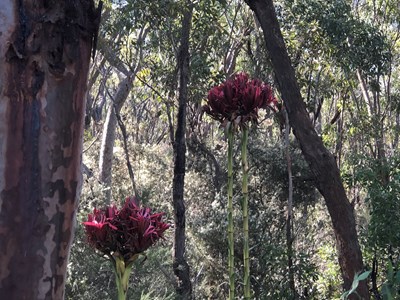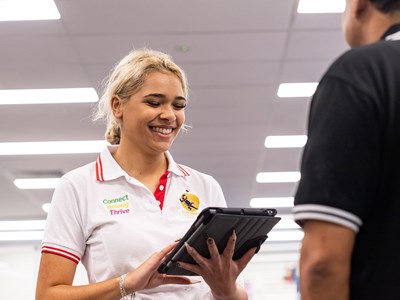Our Story
The Gandangara Local Aboriginal Land Council was established in 1984 after the passing of the Aboriginal Land Rights Act of 1983 (New South Wales) when Minister Walker apportioned land for the Aboriginal peoples living in the South Western Sydney region.
GLALC is one of 120 Local Aboriginal Land Councils in NSW. The objectives of GLALC are governed by the Aboriginal Land Rights Act 1983 (NSW) and include engaging with Members, promoting Aboriginal culture and heritage, celebrating and educating Aboriginal identity, culture and heritage, providing and managing community benefit schemes and services and providing and sustaining business enterprises and investment. Primary methodologies are land acquisition, creation of a sustainable economic base and preserving and sharing traditional culture, identity and heritage. Currently, GLALC is the largest single landowner in the Sutherland Shire, owns/manages 28 rental properties, 3 business sites and pursues undecided land claims. Claims have been made for a total of 4,700 hectares of land and most claims are yet to be decided. Our membership has grown to more than 780 and the parent body, Gandangara Local Aboriginal Land Council (GLALC), is the administrative hub of our operations, caring for our assets and supervising our specialised service businesses, Gandangara Health Services Ltd (GHS), Marumali Ltd and Gandangara Transport Services Ltd (GTS).
The jurisdictional boundaries of the Gandangara Local Aboriginal Land Council (GLALC) span, in whole or in part, six Local Government Areas in the South Western Sydney region. These include Liverpool, Fairfield, Canterbury-Bankstown, Parramatta, Cumberland, and the Sutherland Shire.
KEEPING OUR SPIRITS STRONG
Our name, just like our reputation, does matter. As do our languages, traditions, stories, art, dance and cultural protocols. They all contribute to our personal sense of self, our past, where we came from and where we belong.
The Unbroken Lines of Aboriginality
Throughout our entire existence, what connects us, what gives us our sense of belonging, what makes us thrive is our Aboriginality. This is not a matter of legal or tribal definition, family background or skin color. Our Aboriginality is best defined by our attitudes and behaviour towards ourselves, and others, throughout our lives, throughout our history. They are most clearly seen and felt in three of the most important aspects of our lives. Family. Country. Neighbour. They are the unbroken lines of our Aboriginality.
The Unbroken Line of Family
The heartbeat of every clan and every country has always been the family. Our mother earth gave all of us life, equally. She has loved and nurtured us equally. So, we in turn have always respected, loved and nurtured each other equally. She is the centre of our family, which in turn is the centre of every clan, which in turn is the centre of every country. All that Mother earth has done for us radiates outwards, from each of us and into those closest to us. Family was fundamentally important to us from the beginning and it continues to be so to us now.
The Unbroken Line of Country
Our land, our country is our source of life. Mother feeds us. Mother teaches us. Mother protects us. We flourish and continue to exist because of Mother. In return, we care for Mother, managed Mother, cultivate Mother, danced for Mother, paint on our bodies and we have fought to protect our Mother, from the beginning. Today, we continue to be our land’s custodians. We also continue to fight to protect and to preserve our Mother Earth.
The Unbroken Line of Neighbour
We began in a time when there were no fences and the artificial boundaries created by the imported concept of land ownership to separate us from our neighbours. We began in a time when the land was shared between all of us. We may have lived separately, chosen different paths, had different languages and customs, but we respected each other’s regions, honoured our differences and embraced our diversity. We were as diverse as the land we lived on, but we came together regularly to share and trade what we had. We continue to be this way, sharing what we have with our neighbours, respecting our differences and embracing our diversity.
We continue to be this way today, and are the longest surviving culture in the world for that very reason.
The central objective and duty of our Land Council is to improve, protect and foster the interests of all Aboriginal people within the Council’s area and everyone who is a Member of the Council. This responsibility includes providing essential services such as health and transport, managing and protecting our lands and sacred sites, curating our historical artefacts, and growing our financial assets. All of these contribute significantly to the health, wellbeing and prosperity of our Members and wider community. They can and do improve, empower and transform individual lives for the better.
There is, however, another motivating force that has even more positive, transformative effects on the people we work to help – pride and faith in our Aboriginality. This works far deeper than the solution to a health or financial problem, it touches a part of us that studying our history and cultures can’t always reach. This is the most private, most personal influence on all of us. This is what makes the work we do here so very personal for all of us.
At Gandangara we protect and promote the enduring knowledge of what it means to be us. We protect and promote the unbroken lines of our Aboriginality by example, putting them into practice in our own lives and our working days. We encourage all our Members, and our community to appreciate, embrace and live by the enduring, practical values and principals we, as the First Peoples of all backgrounds, have lived by from the beginning.
Protecting and Promoting Family
Everyone who works at or with Gandangara is considered part of our family and treated that way. We come from mother earth, we come from the same earth, we have shared the joys and the pains, we have shared the same love. We understand what you think and feel because we have those thoughts and feelings. Given the suffering and deprivations we have endured, we have to be the most loving people on earth to still be here, putting out our hands in friendship.
Those closest to us need and deserve everything we can give them. When we lived on the land we had to share, we had to stay close, we had to respect and protect each other, to endure and to thrive. Nothing has changed. Not for us. At Gandangara, family is what matters most, no matter what size or shape it is, no matter what its’ problems. All of us are better, stronger, happier when we put our family’s interests first.
Protecting and Promoting Our Land
It is an honour and a privilege to be given custody of our lands, and we take our protective care and guardianship very seriously. We are investing much time and money into repairing and restoring those areas of our lands, that have been damaged and misused, back to their natural beautiful state. We are doing it out of respect for our precious asset but also out of respect to those who came before us. We are doing to provide joy and pride of ownership to our Members, to provide a beautiful source of enjoyment, and to secure it as a legacy for our children.
We are protecting our lands physically and legally. We continue to fight, in the courts and the legislature, to retain and regain more of our lands, and to ensure our inalienable rights to it. Through our efforts our land holdings continue to grow in value and size. Our ancestors managed their land carefully and respectfully, to ensure their viability and wellbeing. They also fought long and hard to protect their land against those who would misuse it or take it from them. We continue to do that work and fight those fights.
Protecting and Promoting Our Neighbours
We are apart of Greater Western Sydney, home to the largest urban Aboriginal population in the country. First Peoples have come from all over Australia, from all countries, clans, families, cultures and language groups, making ours the most diverse Aboriginal community in the country as well. The staff at Gandangara and our services reflect that diversity and are dedicated to promoting the unity, spirit of co-operation and the shared opportunities provided to all of us.
We have developed respectful working relationships with the local city councils (local government), governmental departments and many other organisations and businesses in our region, to achieve mutually beneficial outcomes for all our communities. We promote our histories and cultures in the schools, nurturing understanding and respect between us. We meet regularly with our Members to hear their voices and thoughts and understand their needs which we formalize as part of our Community, Land and Business Plan.
These are our modern-day corroborees, that echo the regular meetings and gatherings of our ancestors, who embraced and benefited from their diversity. They did so out of respect for their differences and were able to share their wisdoms freely, in a spirit of unity, openness and for mutual benefit. Our Members and our community are growing and thriving because we are following this same path.
Protecting and Promoting Peace Amongst Ourselves
At Gandangara we consider peace as far more than the absence of hostility, it is the active presence of conscious goodness and kindness toward each other. It is the state of having peace of mind and peace of heart. We know, better than most, that bad things happen to good people, but returning evil for evil only every achieves more suffering. We are providing our Members and community with the practical help, advice and counselling in every way they need to restore, secure and enhance the peace in their lives. We see the transformative power of peace in their personal, family and professional lives every day. It is the most powerful antidote to the world’s aggressive selfishness. Our ancestors knew this well and they thrived. At Gandangara we choose peace.
If we are truly proud of being the First People, then we must think, act and live
as the First People did in regards to our family, clan, country and neighbours.
At Gandangara we work hard at putting valuable meaning to our name, by what we stand for and what we do for our Members. This is important because the outcome transcends legal obligations and resonates beyond our walls. Names bring with them certain perceptions and even expectations depending on the reputations that have been built around them. Gandangara has built for itself a fine reputation of integrity, honesty, trustworthiness, respect and successful, accountable management. That’s the ‘name’ we all value and cherish.
Our literal name ‘Gandangara’ does not refer to the Traditional Custodians of the area within this jurisdiction. Definitively identifying the traditional owners or custodians of the land in our region is fraught with difficulty, from both the perspective of historical sources and the contemporary perspective of identity politics and language revivalism.
Previous GLALC company documents and external publications assert that – ‘The original owners of the land of our region are the Darug Nation, and particularly the Cabrogal Clan, whom we acknowledge, and to whose Elders and ancestors we pay deep respect.’ (Board tenure 2011 -2015)
Information and historical records about the Traditional Owners have come from early colonists and ethnographers observing Aboriginal people. Historical records are based on the lens of settler colonialism as found in the records of the early colonists (especially Watkin Tench, William Dawes and David Collins). The difficulty is compounded by the devastation and disenfranchisement inflicted upon the First Peoples of the Sydney area.
Academic scholarship on the topic of Traditional Owners, in the South Western Sydney area, is scant. Frequently cited sources include Kohen ( 1993 - although his work is controversial and not based on consensus) along with Attenbrow (2003) Dreher (2006) and Gapps (2010).
Most of these sources acknowledge the traditional Country and language as being ‘Darug’ and the clan of the Cabramatta region as being ‘Cabrogal’ (or Gabrogal) Because of contemporary politics of representation, around the history (and the current revivalism) of the Darug language, we tend to focus on recognising the families within the Cabrogal clan as the traditional custodians of the land.
Existing research also postulates that the historical connection of the Cabrogal clan, as being original to the South Western Sydney area, can be seen in the ‘Cabra’ prefixes on place names such as Cabramatta, and the name of the Cabrogal grub, a woodworm whose provenance is the Cumberland plains. Historians note that a ‘clan’ of Aboriginal people was an extended family of up to around 60 persons and that the Cabrogal (also recorded as Ga-bro-gal or Cobrakall between the 1790s and 1800s) were the clan group original to the Cabramatta creek areas.
Today, there are no descendants of this historical clan recorded on the Register of Aboriginal Owners for the Gandangara Local Aboriginal Land Council area, or its membership under the Office of the Registrar, ALRA 1983 (NSW). As such, today the Gandangara Local Aboriginal Land Council community is a multicultural collection of Aboriginal persons from many different families, clans, tribal and nation groups, from many different countries.
We acknowledge the families of the Cabrogal clan as the Traditional Custodians of this land. We act as the statutory custodians of the Aboriginal persons living in this land. We honour our Elders past, present and emerging. More research needs to be conducted, incorporating the Local Aboriginal perspectives, in the accurate construction of this history.
